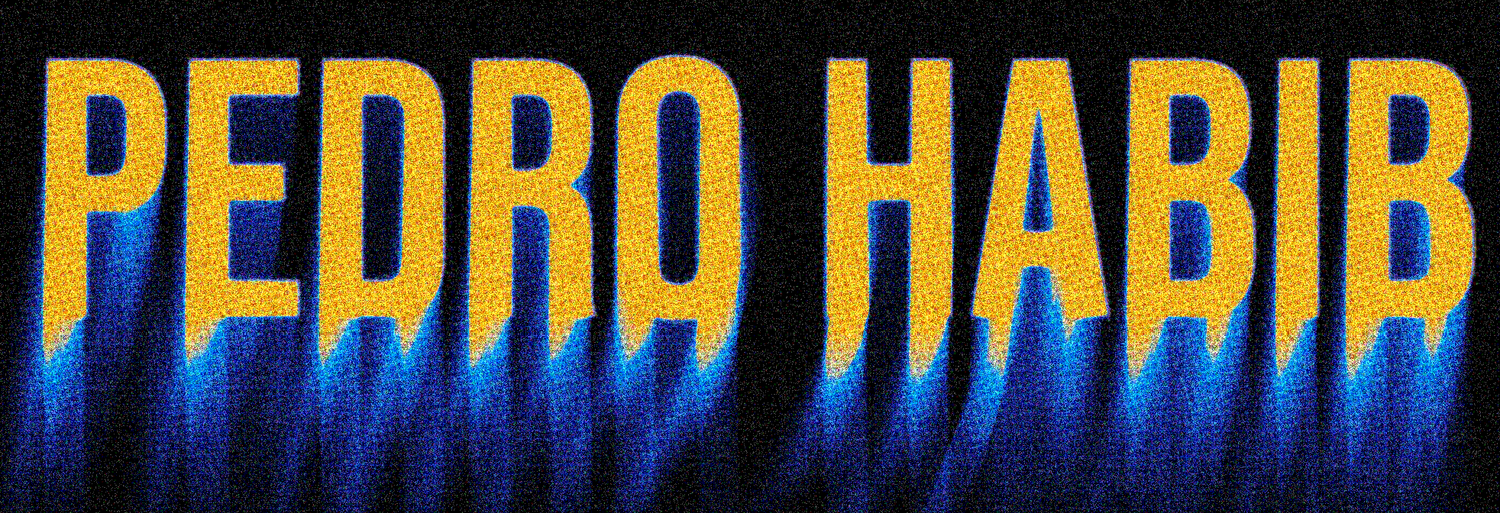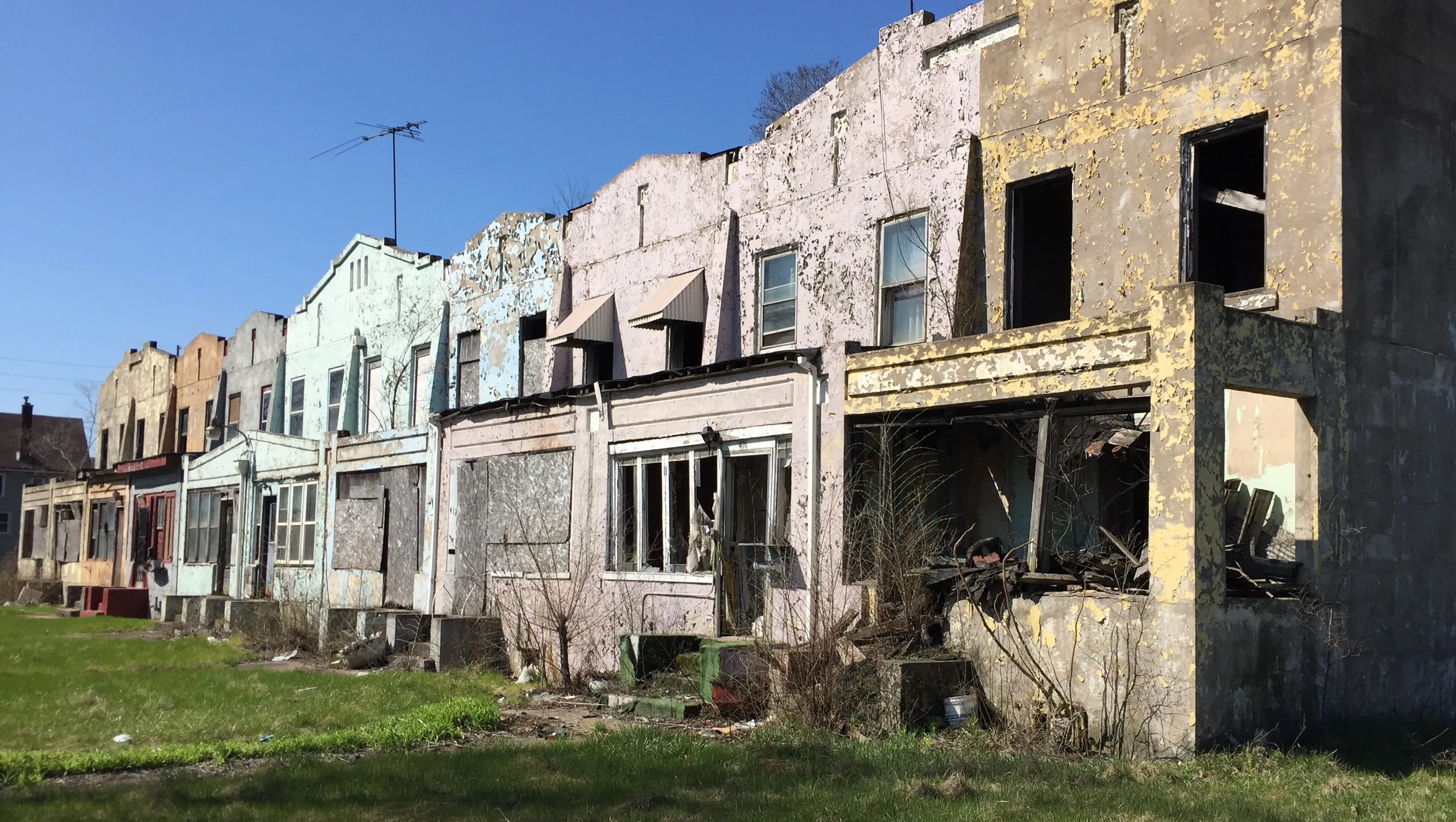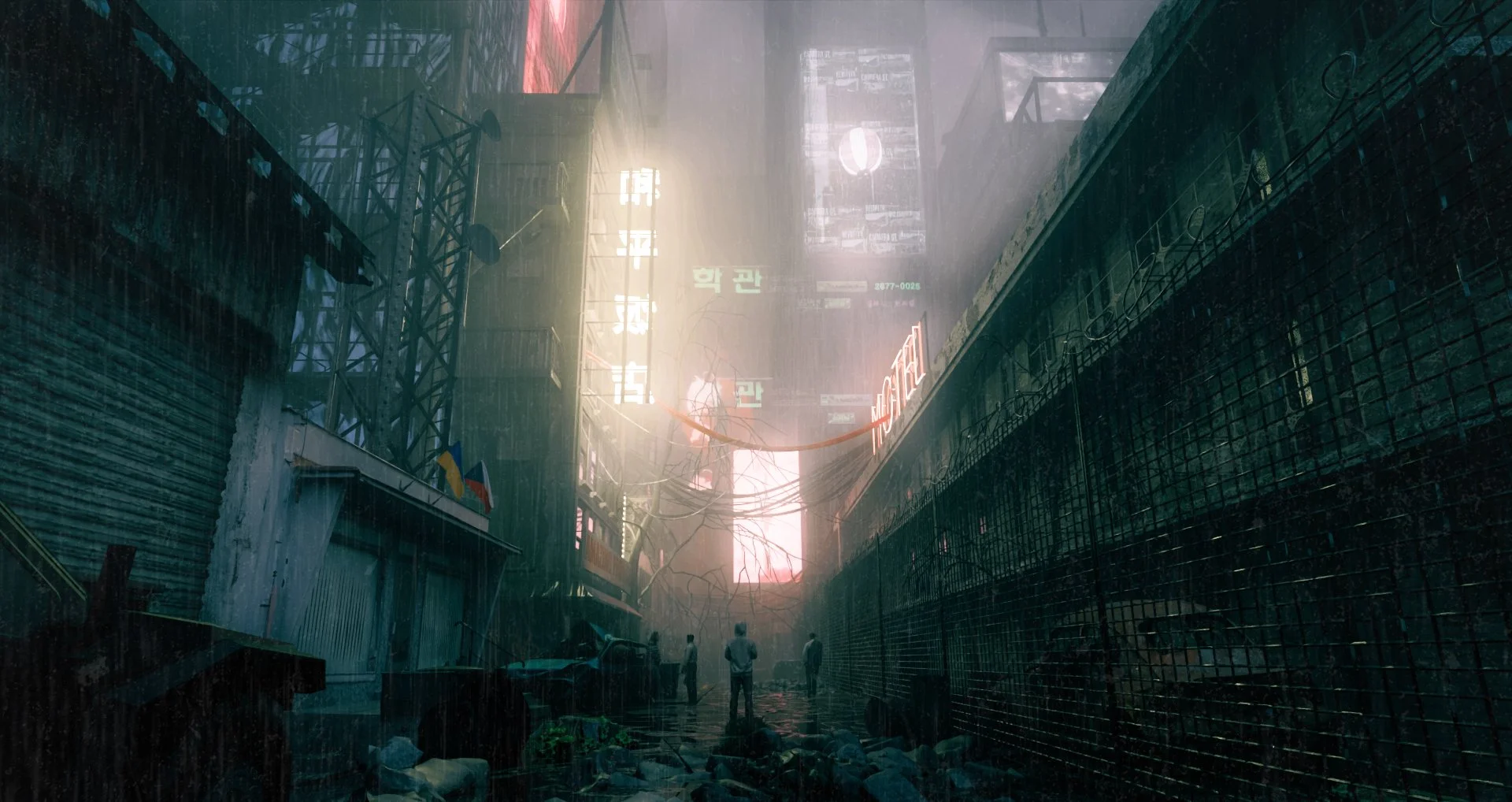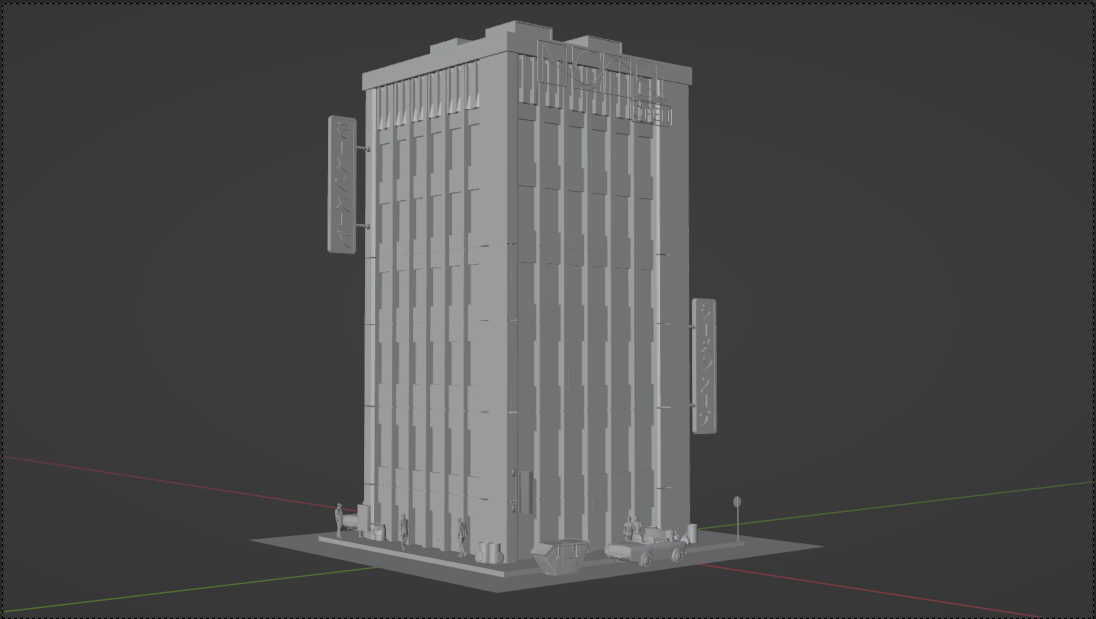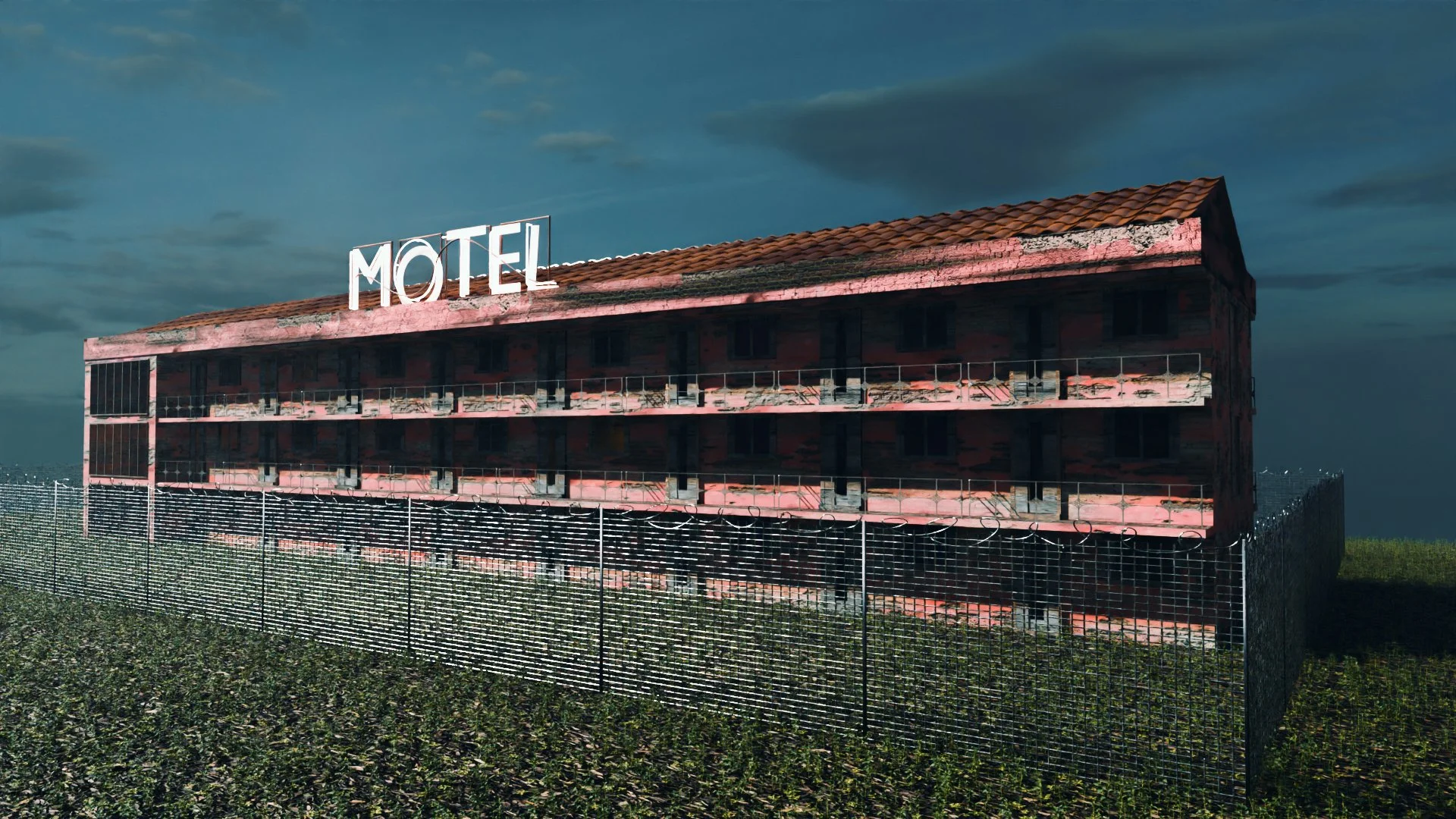Urban decay in 3D art.
The Beauty of Urban Decay in 3D Art.
Urban decay for me, is a fascinating subject in 3D Art, offering a rich tapestry of textures, colours, and forms that tell stories of time, neglect, and nature's reclamation. Abandoned factories, derelict apartment buildings, rusted cars, and crumbling infrastructure evoke a sense of mystery, nostalgia, and even beauty in destruction. This theme provides artists with an opportunity to push their creative and technical skills, blending different textures, placing assets in a way that feels organic, and optimizing the scene for performance while maintaining high visual fidelity.
In this post, I'll explore what makes urban decay so visually compelling, how I develop and study, to recreate it in 3D, and the technical considerations necessary for crafting a detailed and efficient scene.
The Dystopian Future and Urban Decay
I believe that Urban decay and dystopian futures go hand in hand in terms of aesthetic, as we often see since the 80’s descriptions of a broken world and a lost future seems to be well paired as a theme for stories as both depict a world shaped by neglect, societal collapse, or technological overreach. Dystopian settings often exaggerate the effects of decay, using it as a visual and narrative tool to evoke themes of survival, oppression, and lost grandeur.
There is a reason for that of course, Since theories and speculations about urban space and the economic development of cities began to be analyzed academically by specialists, we started to see specialists criticizing the mode of urban expansion, economies dependent on a single exclusive mode of functioning, the destruction of urban spaces and the development of diverse and complex infrastructures, questions began to exist about the functionality of the current urban fabric and its purpose, speculations about the decline of urban spaces triggered several theories about the future of cities in the contemporary world.
I will not go into the theory itself, because it is quite complex and definitely deserves a very detailed post so it can be understood properly!!
BUT!
Great examples like the Rust Belt in the United States, are interesting to study and understand how an industrial decline affected the lives of millions of people, leaving their cities almost abandoned in most extreme cases.
Rust belt.
The Rust Belt is a term used to describe the geographic region stretching from New York through the Midwest that was once dominated by the coal industry, steel production, and manufacturing. The Rust Belt became an industrial hub due to its proximity to the Great Lakes, canals, and rivers which allowed companies to access raw materials and ship out finished products.
The region received the Rust Belt name in the late 1970s after a sharp decline in industrial work left many factories abandoned and desolate. This caused increased rust from exposure to the elements.
Chen, J. (n.d.). Rust belt: Definition, why it’s called that, list of states. Investopedia. https://www.investopedia.com/terms/r/rust-belt.asp#:~:text=The%20Rust%20Belt%20refers%20to,from%20exposure%20to%20the%20elements.
Key places to check: Gary, Indiana, Detroit, Michigan and Buffalo, New York.
Gary, Indiana, The most remarkable example of the decadence of the iron belt now rust belt.
Detroit, Michigan.
But why Urban Decay Fits the theme of Dystopian Worlds so well?
Visual Storytelling – Crumbling skyscrapers, abandoned streets, and corroded neon signs immediately signal a declining world. The contrast between remnants of the past and a bleak future helps build immersive and emotionally compelling scenes.
Symbolism – Decay represents the failure of systems—whether political, economic, or technological. The ruins of once-thriving cities remind us of civilization's fragility and raise questions about how and why society collapsed.
Contrast Between Old and New – Many dystopian visions, such as those seen in Blade Runner 2049 or Cyberpunk 2077, juxtapose advanced technology with decayed infrastructure. Holograms flicker over rusted buildings, and high-tech drones patrol abandoned districts, reinforcing the theme of disparity between rich and poor, progress and decay.
Mood and Atmosphere – Dark, wet streets littered with trash, graffiti-covered walls, and overgrown ruins create a unique, gritty aesthetic. This mood makes dystopian settings feel lived-in and realistic, drawing audiences deeper into their worlds.
Night city from Cyberpunk 2077.
CD PROJEKT RED. (2020). Cyberpunk 2077 [Video game].
Before diving into 3D modelling aspect, it is essential to understand how urban environments deteriorate over time, and how important is to study real-world references, this is key to creating believable decay, and also having a proper reference. This involves:
Research real locations: Studying abandoned buildings, old industrial areas, or neglected streets can provide first-hand insight into how decay manifests in different materials. The use online databases, photography collections, and even Google Street View can be excellent resources.
Understand Material Deterioration:
Metal: Rust forms in patches and streaks, often concentrated around bolts, seams, and edges where water collects.
Concrete: Cracks, stains, and chipped surfaces give it an aged appearance, while moss and mold grow in damp areas.
Wood: Warping, splintering, and peeling paint indicate exposure to moisture and changing temperatures.
Glass: Broken windows accumulate dirt and grime, while shattered glass reflects light uniquely.
Studying Games and Movies: Titles like The Last of Us, Fallout, and Metro provide exceptional examples of urban decay in interactive environments. Films such as Blade Runner 2049 and Children of Men also use decay to establish mood and storytelling.
Analyzing Composition: Decay isn't just about damage but how objects interact over time. Vegetation overgrowth, debris piles, and graffiti tell the story of a place's abandonment and transformation.
Cyber decay
It is important to analyze composition to achieve interesting results, understand how to organize the chaos is key to develop environments like this.
Asset Creation & Topology Considerations
When modelling , it's crucial to balance detail and performance. Every object contributes to the overall scene, so understanding when to create custom assets and how to optimize them is essential.
Custom Assets vs. Pre-Made Models
Custom modelling allows for unique, high-detail elements but requires time and good topology practices. Great for learning and also important to build your own asset library with personal items
Pre-made assets can speed up workflow but may require modifications to fit your specific scene. Be careful with copyrights and what type of model you are downloading, pay attention to the descriptions and respect the developer work, so! provide credits if necessary
Importance of Good Topology!!
It is extremely important to understand how to improve your topology:
Efficient edge flow ensures that models remain easy to manipulate, especially if they require animation or destruction effects.
Deciding between high-poly and low-poly: High-poly models are great for sculpting details. However, baking these details onto a lower-poly version ensures better performance in real-time applications.
Using modular assets: Walls, fences, and debris can be designed as modular pieces to save time and resources.
Pay attention to your topology, Prioritize Quads
Quads (4-sided faces) are much easier to deform, and also maintain flat surfaces compared to triangles or n-gons.
Analyze your surface, pay attention to edges and faces, be careful with Uneven Edge Distribution: Avoid areas with too many or too few edges, as this can lead to unwanted distortions or artifacts.
Texture Work & Materials
Textures bring urban decay to life. The key to creating a convincing look lies in layering materials, using real-world references, and applying smart shading techniques.
Layering and Mixing Textures
Base materials: Start with a clean version of the material (metal, brick, concrete, etc.).
Aging layers: Add grunge, dirt, moss, rust, and scratches using texture painting or procedural shaders.
Blending techniques: Use roughness, displacement, and normal maps to add depth without excessive geometry.
Decals and Vertex Painting
Decals: Place rust streaks, cracks, graffiti, and dirt overlays without modifying the base texture.
Vertex painting: Allows dynamic texture blending, such as moss growing in damp areas or grime accumulating in corners.
Choosing the Right Resolution
Foreground objects: Use 2K or 4K textures where details matter, using larger textures is a mistake I make all the time and sometimes can add a lot of unnecessary processing to your scene due to the resolution.
Background assets: Can be optimized with 1K or smaller textures.
Tiling textures: Ensure seamless repetition while avoiding obvious patterns, mapping the textures is essential.
3d asset I modelled myself. Here I tired to give a more realistic look while keeping the videogame aesthetic to the asset.
Urban decay is more than just broken buildings and rusted metal, it's about storytelling through environment design. When combined with dystopian themes, it creates an atmosphere that captivates audiences, immersing them in worlds that feel real yet unsettling. Whether you're working on a game, animation, or visualization, mastering urban decay will expand your skill set and help you build richer, more atmospheric worlds.
Experiment with different techniques, push your creative limits, and, most importantly have fun bringing the beauty of decay to life in your 3D projects!
Cyberstreet
